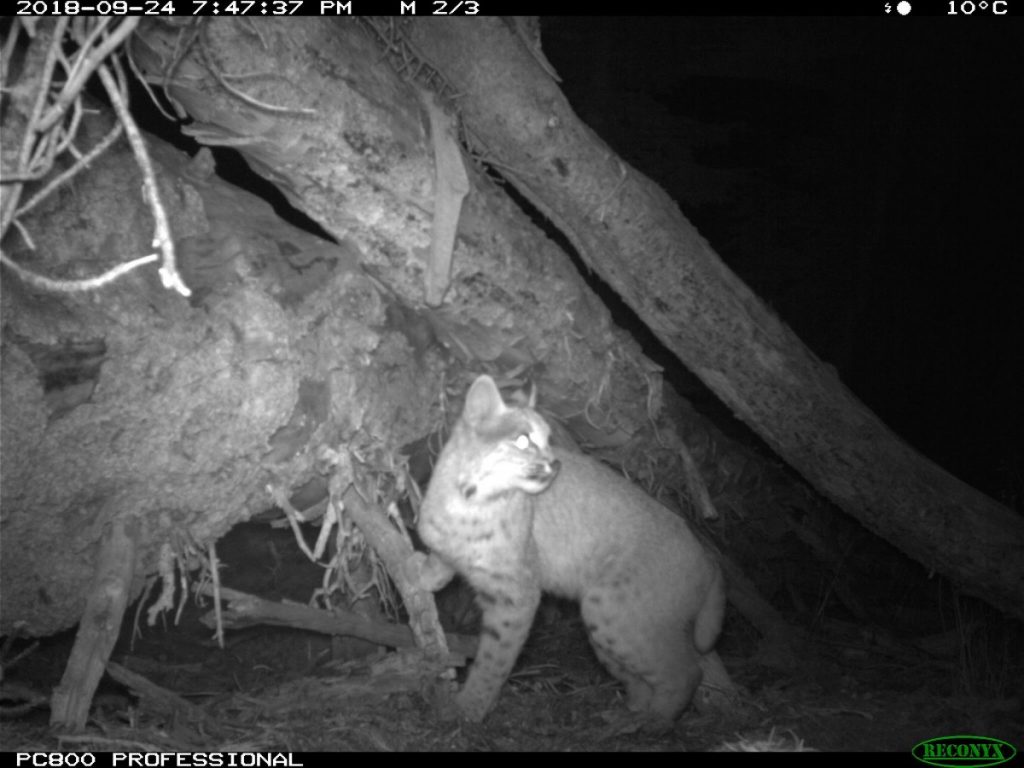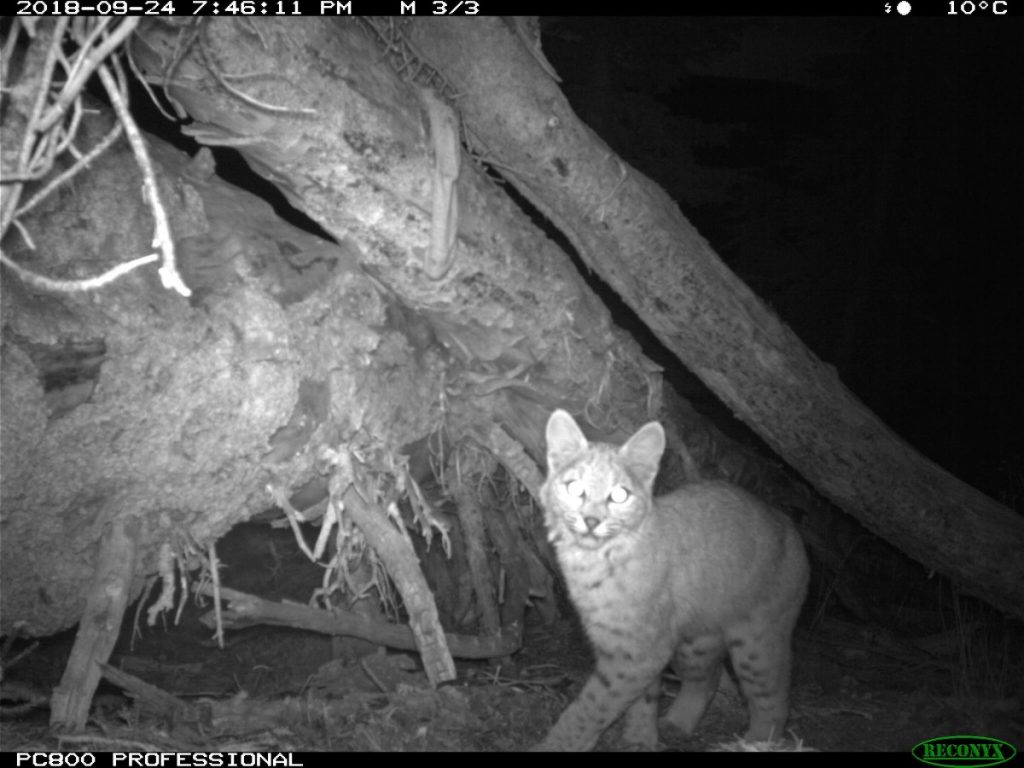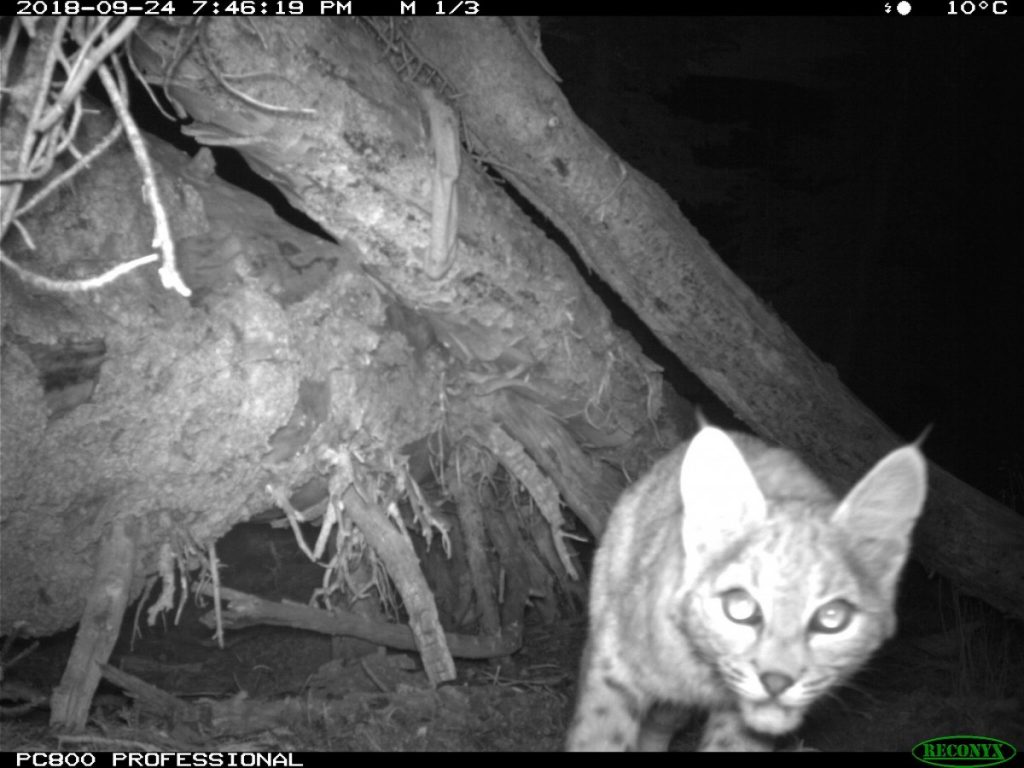When CSERC staff sets up photo-detection cameras at 9,000’ and higher in our local mountains, our priority goal is to detect the rare Sierra Nevada red fox. If no foxes get drawn to the cameras, then our second priority goal is to get pictures of the elusive American marten. During recent photo surveys with four cameras set up in one wild roadless area of the Stanislaus Forest, CSERC did successfully get photo evidence of visits by a young marten.
We were surprised, however, that at both of CSERC’s two highest placed photo- stations during the recent survey, bobcats investigated the “chicken in a sock” bait (and even sniffed at our camera at one station).

Mountain lions and bobcats have consistently been the most furtive of wildlife visitors to CSERC cameras – often only being photographed at the very edges of the photo-detection area because they won’t come close to the camera or bait. Over the years, bobcats have routinely showed their reluctance to approach anything associated with human smells, so it is rare for a bobcat to actually walk right up to the bait.
It is even more unusual for two different bobcats (one was obviously younger than the other) to be photographed at two remote camera sites at 9,000’ elevation or higher.
The three photos of the younger bobcat (shown here) reveal its curiosity and lack of fear.

While our CSERC staff is understandably pleased to get pictures of any uncommon wildlife species at high elevation sites, the fact that bobcats as well as coyotes were photographed at 9,000’ does not bode well for the rare Sierra Nevada red fox. Coyotes and bobcats are potential double threats to the rare fox since they could be either predators of the fox or competitors with the fox by pursuing rodents and other prey.
Bobcats and coyotes are generally “common” at lower elevations throughout the forests and foothills. In contrast, the Sierra Nevada red fox is detected at very high elevations. Photos that show bobcats and coyotes in those remote, high mountain sites reveal their presence as yet another stressor for the rare fox.


